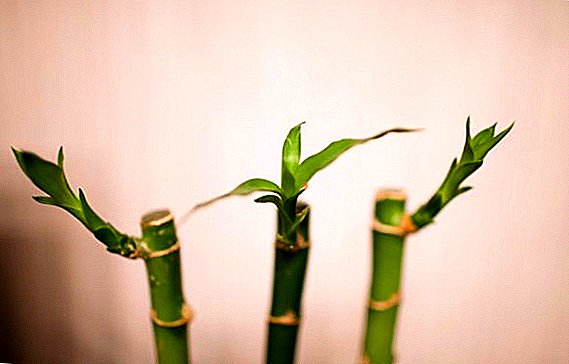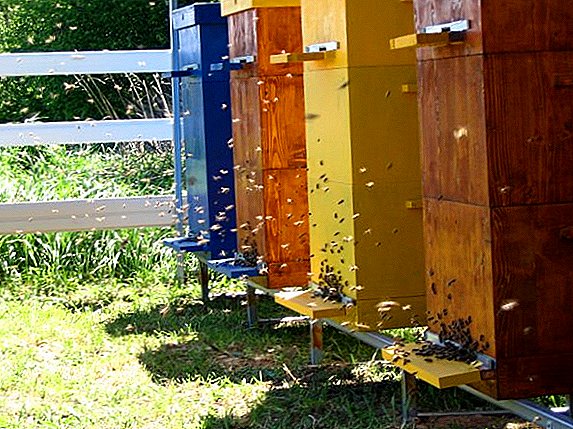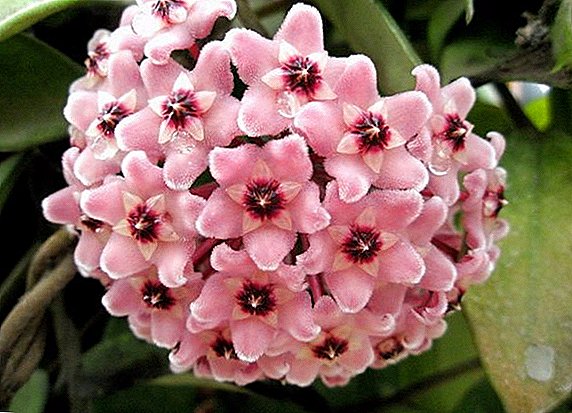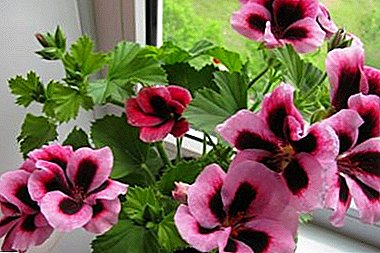 Blackberry resistant varieties - very popular in home cultivation because of their taste, beneficial properties, resistance to frost, diseases and pests. There are quite a few such varieties. We bring to your attention the most popular frost-resistant grades of blackberry.
Blackberry resistant varieties - very popular in home cultivation because of their taste, beneficial properties, resistance to frost, diseases and pests. There are quite a few such varieties. We bring to your attention the most popular frost-resistant grades of blackberry.
Agave
This variety of blackberry more than a hundred years ago was bred in America. This is a straight-growing variety with powerful, tall (1.8-2.2 m), prickly bushes. The spikes are big, slightly curved. The shoots of the plant are erect, thick, with drooping tops, and thin branches can even grow horizontally. Elevated shoots can live for two years (in the first year they grow, and in the second they bear fruit and then die), and the underground part has a multi-year one.
 Annual shoots are green (in autumn they become purple-red color), with large thorns, and two-year-olds are red-brown. The leaves on the bushes are dark green, five-leafed, with finely serrated edges. The flowers are white, large, collected in straight racemes. Blackberry berries Agave large, 3-4 g, dense, bluish-black, shiny, juicy and very tasty. In the berry brush 10-12 berries. They begin to sing at the end of August - in early September. The variety is famous for its absolute frost resistance (tolerates temperatures down to -40 ° C), high yield (it can produce up to 10 kg of berries from one bush per year) and resistance to various diseases.
Annual shoots are green (in autumn they become purple-red color), with large thorns, and two-year-olds are red-brown. The leaves on the bushes are dark green, five-leafed, with finely serrated edges. The flowers are white, large, collected in straight racemes. Blackberry berries Agave large, 3-4 g, dense, bluish-black, shiny, juicy and very tasty. In the berry brush 10-12 berries. They begin to sing at the end of August - in early September. The variety is famous for its absolute frost resistance (tolerates temperatures down to -40 ° C), high yield (it can produce up to 10 kg of berries from one bush per year) and resistance to various diseases.
Fresh berries are stored for quite some time. It is the most enduring and cold-resistant variety of blackberry, its bushes freely winter over the shelter. To blackberries Agaveam generously fruited, plant it in a lighted place, with loamy soil, at a distance of 50-70 cm from each other. Agaves very aggressively spontaneously multiply root suckers, and can also do this by the tips of the shoots, but they are quite difficult to bend down for rooting and poorly rooted.
Did you know? In Europe, the blackberry appeared at the beginning of the XVIII century. And America is considered to be the birthplace of this berry, where it grows on almost all personal plots.
Gazda
 It is vigorous, with straight and strong stems (supports should be placed), a little-studded blackberry variety. Stems plant biennial. Blackberry fructifies in the second year, and immediately after the fruiting is recommended to cut the stems. In addition, you need to root the side branches to 2-3 internodes. The flowers are white, large, collected in straight racemes. The leaves on the bushes are dark green, five-leafed, with finely serrated edges. This variety is suitable for mechanized assembly of berries.
It is vigorous, with straight and strong stems (supports should be placed), a little-studded blackberry variety. Stems plant biennial. Blackberry fructifies in the second year, and immediately after the fruiting is recommended to cut the stems. In addition, you need to root the side branches to 2-3 internodes. The flowers are white, large, collected in straight racemes. The leaves on the bushes are dark green, five-leafed, with finely serrated edges. This variety is suitable for mechanized assembly of berries.
The variety ripens relatively early, from the beginning of August until the end of September. The berries are large, 5-7 g, round, glossy, black, sweet-sour, dense consistency. They are stored for a long time, and are suitable for trading on the market fresh, and for freezing, and for preservation. Well transported. The yield of blackberry varieties Gazda quite high. The grade is allocated with high frost resistance and endurance to various diseases and wreckers. Prefers lit places and fertile loamy soils.
Did you know? Because of the studded stems, our ancestors called the blackberry the hedgehog-berry.
Darrow
This is a variety of straight-growing blackberry American selection. Berries are sweet and sour, large (up to 4 g), glossy, black, oblong, juicy, dense flesh. The shoots are strong, thorny, erect, with lashes 2.5-3 m in length. Finger leaves, dark green, decorative. The ripening of the variety is average, and the ripening period lasts for a month and a half. In blackberry varieties Darrow yield is dictated by the conditions of cultivation and the age of the bush, each year gives more and more yield.
 From one bush it is possible to collect about ten kilograms of berries. Blackberry darrow is grown most often on trellis and supports. In the fifth or sixth year, the bushes give up to ten pieces of offspring. At one place without transplanting a blackberry darrow can grow up to ten years. The variety is resistant to diseases and pests and is very frost-resistant, able to withstand up to 34 ° C frost.
From one bush it is possible to collect about ten kilograms of berries. Blackberry darrow is grown most often on trellis and supports. In the fifth or sixth year, the bushes give up to ten pieces of offspring. At one place without transplanting a blackberry darrow can grow up to ten years. The variety is resistant to diseases and pests and is very frost-resistant, able to withstand up to 34 ° C frost.
Important! By frost resistance, this variety is inferior only to the Agave variety.
For planting blackberry darrow, choose lighted areas and fertile loam. This variety is very demanding of light, especially when shoots begin to grow vigorously and the fruits ripen. Berries are used in fresh and processed form (juice, jam, compote, jelly, marmalade, dried), and excellent tea is obtained from the leaves.
Polar
 This is a variety of Polish selection, bred in 2008. Shoots straight, powerful, without thorns, 2.7 m in length. The leaves are dark green, melkopilchatye along the edges. The berries are dense, shiny, large, black, oval lined form, 9-11 g in weight, sweet in taste and fragrant. The variety is early ripe and bears fruit for a long time. Berries ripen at the end of June. With one blackberry bush can collect 5 kg of berries. Blackberry varieties Polar resistant to various diseases and pests, suitable for mechanized processing.
This is a variety of Polish selection, bred in 2008. Shoots straight, powerful, without thorns, 2.7 m in length. The leaves are dark green, melkopilchatye along the edges. The berries are dense, shiny, large, black, oval lined form, 9-11 g in weight, sweet in taste and fragrant. The variety is early ripe and bears fruit for a long time. Berries ripen at the end of June. With one blackberry bush can collect 5 kg of berries. Blackberry varieties Polar resistant to various diseases and pests, suitable for mechanized processing.
High frost resistance (withstands temperatures down to -30 ˚С). Berries are easily transported, able to withstand long shipments. They are used fresh, suitable for freezing and preservation. Planted better in the period from early March to mid-April. Place for planting choose lit, with drained loamy soil.
Important! Blackberry variety Polar does not tolerate overmoistened soil, be sure to consider this when choosing a place to plant.
Ufa local
This blackberry variety is a perfect seed of the Agave variety, but surpasses it in sugar content of berries, yield and, possibly, in frost resistance. Breeding varieties still ongoing. The flowers are white, medium, numerous, collected in straight racemes. The leaves are dark green, melkopilchatye along the edges.
 The berries are black, shiny, dense, about 3 g in weight. The taste of the berries are sweet, with a pronounced blackberry flavor. Landing places prefer lighted and fertile. The variety is extremely winter hardy, with tolerance to various diseases and pests, of medium ripeness. Berries are used fresh and suitable for freezing and preservation.
The berries are black, shiny, dense, about 3 g in weight. The taste of the berries are sweet, with a pronounced blackberry flavor. Landing places prefer lighted and fertile. The variety is extremely winter hardy, with tolerance to various diseases and pests, of medium ripeness. Berries are used fresh and suitable for freezing and preservation.
Wilson airlie
The representative of the early ripening varieties of blackberry. Berries ripen in July. Shoots are upright, but as the plants grow, they lean lower to the ground and therefore they need to be tied up. The flowers are white, numerous, accumulated in straight racemes. The leaves are dark green, melkopilchatye along the edges. Small berries, about 2 g, shiny, black-purple color, egg-shaped.
 Blackberry varieties Wilson Airlie hardy to disease and pests, endowed with high winter hardiness, suitable even for Siberia. Places for planting is best to choose the sun, the soil - fertile loam. The berries are good fresh, suitable for freezing and processing.
Blackberry varieties Wilson Airlie hardy to disease and pests, endowed with high winter hardiness, suitable even for Siberia. Places for planting is best to choose the sun, the soil - fertile loam. The berries are good fresh, suitable for freezing and processing.
Chester Thornless
In the US in the 70s of the last century, the blackberry variety Chester Thornless was bred by hybridization of the variety Tornfrey and Darrow. One of the most frost-resistant varieties bespishny blackberries. Bushes are powerful. The shoots of this blackberry are erect or semi-wilding, light brown, flexible, up to 3 m in height.
Important!Bearing stems after fruiting period begin to dry. The aboveground part of the plant is updated every two years.
 The leaves are trifoliate, melkopilchatye along the edges, dark green. Flowers white or pink, large, pyatilepestkovye. Berry brushes cover dozens of large fruits. Berries are sweet and sour, black, shiny, elongated, up to 3 cm in length, cone-shaped, dense, juicy, 5-8 g in weight. Berries are perfectly transported and stored. They are good both fresh and suitable for freezing and processing. Fully fruiting blackberry varieties Chester Thornless begins with the third year.
The leaves are trifoliate, melkopilchatye along the edges, dark green. Flowers white or pink, large, pyatilepestkovye. Berry brushes cover dozens of large fruits. Berries are sweet and sour, black, shiny, elongated, up to 3 cm in length, cone-shaped, dense, juicy, 5-8 g in weight. Berries are perfectly transported and stored. They are good both fresh and suitable for freezing and processing. Fully fruiting blackberry varieties Chester Thornless begins with the third year.
The variety is endowed with high frost resistance (up to -30 ˚С), endurance to diseases and pests. Does not like too thick landing. For planting, choose lighted areas, fertile, slightly acidic or neutral soil. It is best to plant a bush in spring, right after drying out of the soil, or in late autumn.
Flint
This is a famous American variety that is famous for its high frost resistance (tolerates temperatures down to -40 ˚С), resistance to various diseases and pests, friendly maturation and extremely tasty berries. Branches shrubs, erect, powerful, up to 3 m in height, few spikes. The flowers are large, white, numerous. The leaves are large, with finely serrated edges, dark green.
 The berries are black, shiny, dense, round, weighing 5-7 g, sweet (even sweeter than raspberries). The yield of the variety is very high, about ten kilograms from one bush. The berries are held on the branches for a long time and do not fall, transportable. Good fresh, suitable for freezing and processing. Flowering plant falls on May. Fruits in the second half of July. Flint blackberry is unpretentious, but chooses well-lit places, fertile loamy soil.
The berries are black, shiny, dense, round, weighing 5-7 g, sweet (even sweeter than raspberries). The yield of the variety is very high, about ten kilograms from one bush. The berries are held on the branches for a long time and do not fall, transportable. Good fresh, suitable for freezing and processing. Flowering plant falls on May. Fruits in the second half of July. Flint blackberry is unpretentious, but chooses well-lit places, fertile loamy soil.
Did you know? There is a common notion among people that it is forbidden to pick a blackberry after September 29, because it is dangerous for health, because the leaves of a berry are marked with a devil.












